#USS Tennessee (ACR-10)
Explore tagged Tumblr posts
Text
State Ship Series: USS Tennessee
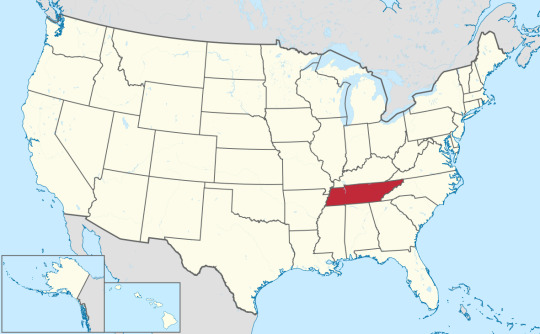
There has been six ships commissioned named after the state of Tennessee in the US Navy. The state was admitted into the United States on June 1, 1796.
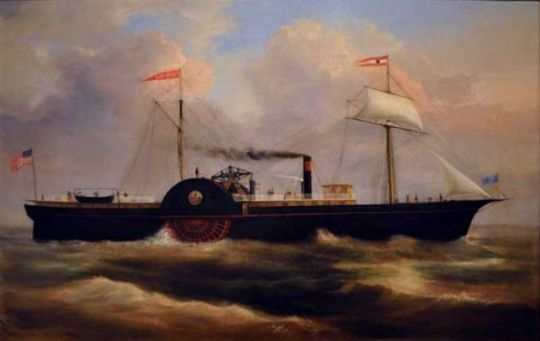
USS Tennessee (1853), side-wheel steamer, in commission from 1862 to 1865. Originally SS Republic, captured by the Confederate in 1862 and renamed CSS Tennessee. Later that year, captured by the Union and commissioned. Renamed USS Mobile.
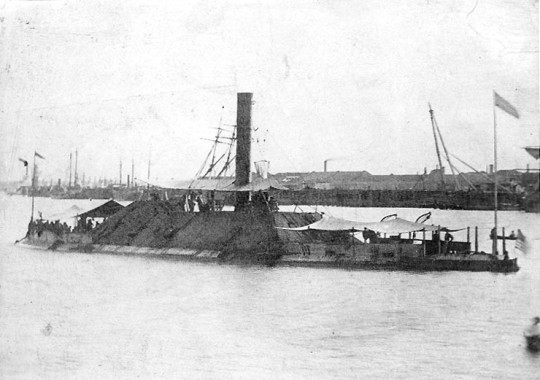
USS Tennessee (1863), casemate ironclad, in commission from 1864 to 1865. She was originally CSS Tennessee and was captured by Union during the Battle of Mobile Bay. She participated in the Siege of Fort Morgan. Scrapped in 1867.
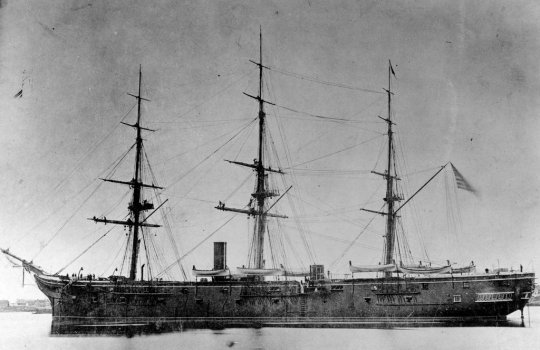
USS Tennessee (1865), Wampanoag class, screw frigate, in common from 1867 to 1886. Originally named USS Madawaska, renamed USS Tennessee in 1869. "In The Steam Navy of the United States, Frank M. Bennet relates that during the time Tennessee was flagship of the North Atlantic Squadron she was 'the largest vessel then in commission in the American Navy, and the era of mastless steel cruisers was yet so far away that she was not suspected, by the youngsters at least, of being obsolete and stood as the type of all that was excellent and majestic in ship construction.' Her spaciousness and the comfort of her quarters as well as her handling characteristics made her a favorite duty station."
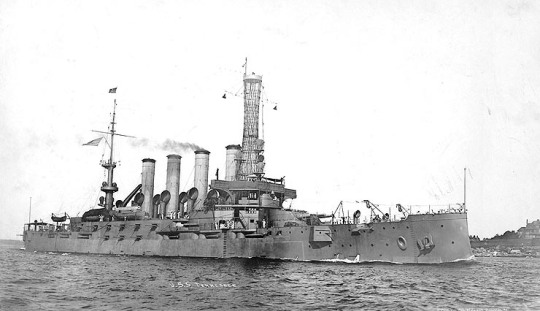
USS Tennessee (ACR-10), Tennessee class, Armored Cruiser, in commission from 1906 to 1917. Renamed USS Memphis in 1916 to free the name for BB-43. She was lost on August 29, 1916 in San Diego Harbor when 70 to 100 ft (21 to 30 m) waves started slammed into her. She was rolling 45°, water entered through her gun ports and funnels. This put out the fire in her boilers and losing steam. Over the next hour and a half, she was slammed against the harbor floor and pushed up onto the beach. 43 men were killed or missing and 204 injured. Deemed a total loss as she had suffered the destruction of her propulsion plant and severe distortion of her hull structure. She was salvaged for her guns and other equipment and scrapped from 1922 to 1938.
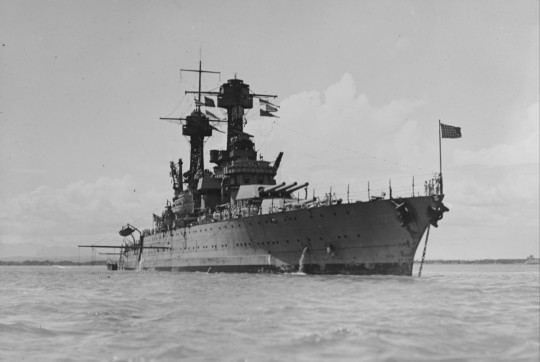
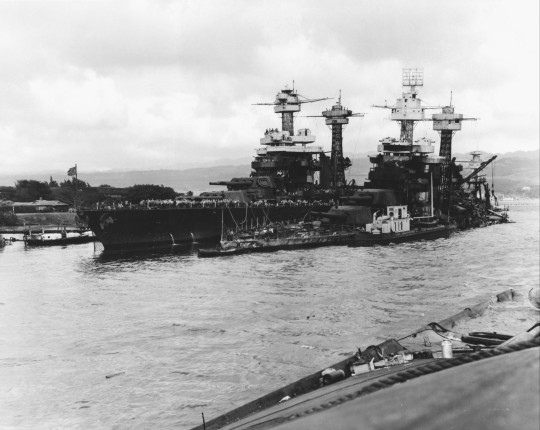

USS Tennessee (BB-43), Tennessee Class, Dreadnought Battleship, in commission from 1920 to 1947. She was part of the "Big 5", the group that consisted of the the most modern battleships of the interwar period. The group compromised of the Tennessee class and Colorado class. Survived the Japanese surprise attack on Pearl Harbor, being hit by two bombs, one of which was the same as the one that destroyed USS Arizona. Luckily, it was a dud. She was protected from torpedoes by being inboard of USS West Virginia. She was pulled from her mooring after USS Maryland was freed. Quickly repaired and went on patrols in 1942. She went back to the yard to be completely rebuilt and modernized from late 1943 to 1944. She fought in the Aleutian Islands Campaign, Gilbert and Marshall Islands campaign, Battles of Tarawa, Battle of Kwajalein, Battle of Eniwetok, Mariana and Palau Islands campaign, Battles of Saipan, Battle of Guam, Battle of Tinian, Battle of Angaur, Philippines campaign, Battle of Leyte, Battle of Surigao Strait (the last battleship engagement), invasion of Iwo Jima, and invasion of Okinawa. She took a kamikaze hit at Okinawa. She earned ten battle stars during WWII. Placed in reserves in 1947, she was scrapped in 1959. Rumor has it the citizens of Tennessee wanted her as a museum ship but the Mississippi river was not deep enough for the battleship to make it.


USS Tennessee (SSBN-734), Ohio class, nuclear powered ballistic missile submarine, in commission from 1988 to present.
NHHC: NH 99943, NH 51951, NH 42390, NH 2230
NARA: 306536
source, source, source
#Tennessee#State Ship Series#USS Tennessee#USS Tennessee (1853)#side-wheel steamer#USS Tennessee (1863)#casemate ironclad#USS Tennessee (1865)#Wampanoag class#screw frigate#USS Madawaska#USS Tennessee (ACR-10)#Tennessee class#Armored Cruiser#Cruiser#USS Memphis#USS Tennessee (BB-43)#dreadnought#battleship#USS Tennessee (SSBN-734)#Ohio Class#ballistic missile submarine#submarine#united states navy#us navy#navy#usn#u.s. navy#my post#June
15 notes
·
View notes
Text
Elephants unchained: 'The day has gone by when this was entertainment'
New Post has been published on https://entertainmentguideto.com/must-see/elephants-unchained-the-day-has-gone-by-when-this-was-entertainment/
Elephants unchained: 'The day has gone by when this was entertainment'
As our understanding of the minds of our fellow species improves, will we increasingly look back at the way we have treated them in horror and repulsion?
Water streams off the edges of her giant ears, runs in rivulets down the wrinkles of her slate-grey skin. She presses her whole head into the hoses force, the spray welling into her mouth. As she drinks, she rubs her skin against the steel fence, her eyelids drooping luxuriously, her trunk relaxing. If ever Ive seen a captive elephant happy, its Flora this morning.
There are no people laughing or pointing here at the Elephant Sanctuary in Tennessee. There are no infants crying, no children arguing. The public are not allowed into the sanctuary, whose unofficial motto is, Allow elephants to be elephants: give them the freedom of choice, the freedom of large areas to explore, the freedom from human gawkers (apart from via the online elecams) while still providing the kind of care that comes with a zoo.
In fact, few things are required of the 10 pachyderms here. They can sleep in the barn or they can spend the night among the pine-covered hills. They can stay in the shade or lounge in the sun. They can wander together for company like elephants in the wild or take off on a solo sojourn. They can chase turkeys or trumpet at deer. They can take a dust bath, roll in a mud wallow, or be sprayed by a keeper, as Flora chose on this day when the temperature hits 34C (93.2F).
I dont think we will ever get away from elephants in captivity, Stephanie DeYoung, the director of elephant husbandry, tells me. But is it time to change how we keep them in captivity?
The Elephant Sanctuary spreads over 2,700 rolling acres.
Beaten, starved, shackled
Watching her now, its hard to imagine Flora a female African elephant, the largest and arguably most regal terrestrial animal on the planet dressed up in a silly costume performing in a one-elephant act for 18 years. But that was her life before.
We are, as a species, generally fascinated by elephants. We see the qualities and characteristics in elephants that we aspire to have ourselves, says Patricia Sims, the co-founder of World Elephant Day. Empathy, enduring family bonds, cooperation, intelligence, long memories, taking care of their environment to name just a few.
Some extraordinary scientific studies in the last few years have revealed just how intelligent they are. They can recognise themselves in a mirror, found scientists in 2006, one of only a few species that do this. They can have an aha moment to solve a puzzle, showed researchers in 2011, by witnessing a young elephant in the National zoo in Washington DC who would move a block wherever she needed it to reach food. We even know now that what makes captive elephants happy is not the size of their pen, but whether they live with other elephants, thanks to a landmark collection of papers in the scientific journal PLOS ONE last year
But our desire to be close to these incredible creatures has led us down some ugly paths. We have ridden them, dressed them up in ridiculous attire, beaten them, starved them, and slaughtered them en masse. Today tens of thousands live shackled in prisons of our making.
A video still from a report that was shown during the trial of circus trainer Mary Chipperfield, who was convicted in 1999 on 12 counts of animal cruelty.
Elephants are still gussied up to decorate weddings in India; in Sri Lanka they are locked in religious sites as living (but suffering) embodiments of a god; in Africa tourists ride trained elephants to see wild ones; in south-east Asia elephants are used to log the very forests they once called home; and worldwide elephants are still forced to perform silly tricks in circuses and zoos, tricks they are trained to do by brutalising methods, often using a bullhook, a large, sharp, medieval-looking instrument used to create pain in an elephants sensitive spots.
When I ask ecologist and author of Beyond Words: What Animals Think and Feel, Carl Safina, if he believes elephants are intelligent and conscious, he says that there is zero evidence that such animals are not conscious, while there is multiple lines of evidence both physically and behaviourally that they are.
So what are the implications of this? Besides their own particular form of consciousness, elephants have spectacularly good memories. Can they remember abuse and pain? Could some elephants even be described as traumatised? There have certainly been episodes that would seem to indicate this. In 1994, for example, a female African elephant named Tyke crushed her trainer to death in front of a circus audience in Honolulu. She escaped the tent and ran through the city streets for a half hour before police officers brought her down in a hail of 86 bullets. Like all circus elephants, shed spent her life chained up, transported in trucks and beaten to perform. The only freedom shed known was when shed escape and shed done so twice before. (The 2013 documentary Blackfish, about a killer whale, Tilikum, appears to tell a very similar story about another of the earths largest mammals.)
Sukari in her enclosure
Over and over again, staff at the Tennessee sanctuary tell me that elephants never kill anyone accidentally. Like humans, they can snap. Constant beatings, solitary confinement, being chained to the floor: all this can understandably push any elephant to the brink and some will retaliate.
In her book Elephants on the Edge, Gay A Bradshaw argues that elephants both wild and captive can suffer psychological traumas, leading them to become more unpredictable and violent. When elephants lose their homes and families, are subjected to mass killing, and are captured and incarcerated in zoos, they breakdown mentally and culturally and exhibit symptoms found in human prisoners and victims of genocide, Bradshaw said in an interview with Scientific American.
In her book, Bradshaw describes an experiment where the symptoms of an elephant were sent to five mental health officials who had no knowledge that they were diagnosing an elephant and not a human but all of whom diagnosed the individual with PTSD.
As our understanding of the minds of our fellow species improves, will we increasingly look back at the way we have treated them in horror and repulsion?
Shirleys right ear was scarred when she was on a ship that caught fire and sank.
Unloosening the chains
The impact of our changing understanding of elephant psychology has already been profound. Perhaps the most astounding change is at circuses. Ringling Brothers and Barnum & Bailey, arguably the worlds most famous circuses, stopped using elephants last year and then closed for good this May after 146 years. Britains last circus elephant, Anne, was rescued in 2011 after the Daily Mail revealed she was being viciously abused. Twenty countries have banned the use of elephants in circuses. Even India has banned elephants in both circuses and zoos though the process of retiring the elephants is gradual.
The days gone by of putting an animal in a cage and calling it entertainment. I think more and more people realise that is ridiculous, says DeYoung.
Life in zoos is generally not as abusive for elephants as in circuses. Zoo elephants are not travelling overland on a weekly basis, are not usually chained up for days to weeks to years on end, and are not usually forced to perform tricks day in and day out.
But there have been enormous changes here too. Recognising the social needs of elephants, the USs Association for Zoos and Aquariums (AZA) now requires that any accredited zoo must have at least three female elephants, two males or three mixed genders in order to make sure elephants have peers although facilities can apply for an expectation. (There has been less progress on space: a creature known to roam hundreds to thousands of square kilometres in the wild gets as little as 500 square metres of outside space in a zoo.)
The best zoos are changing concrete cages to natural environments, adding more enrichment and taking their elephants for daily walks to increase exercise. Today, 43 zoos are members of the Elephant Welfare Initiative, which tracks real-time data on their pachyderms, all in an effort to improve conditions. And many elephant keepers now have behavioural backgrounds, an acknowledgement of the species deep psychological needs, explains Otto Fad, an animal behaviour and welfare specialist. All of us elephant geeks are paying attention, he says.
Adult elephants and a calf chained in an indoor enclosure at the Ringling Bros. and Barnum & Bailey Circus, US in 1989. Photograph: Scott McKiernan/Zuma/Alamy
But progress is slow, and patchy. China is buying up wild elephants from Africa, and Chinese zoos are hardly known for humane conditions. Eyewitnesses say zoos there are forcing elephants to do unnatural tricks to entertain visitors, much like circuses. Even in Europe controversy remains: In April, Peta released footage of keepers at the Hanover zoo in Germany using a bullhook and whip to train juvenile elephants to perform tricks. The European Association of Zoos and Aquariums and the AZA both still allow the use of bullhooks.
And then there are the 15,000 to 20,000 elephants around the world that still spend their lives in chains. Harsh, is how Carol Buckley, the head of Elephant Aid International,describes conditions in Asia. With little exception, they live in chains when not being dominated by their mahout to perform. The mahouts suffer equally … [Both] live in squalor, deprived of the most basic needs. In Indonesia, activists have photographed an elephant in a zoo that lives alone with its feet tied together by a chain. It cant move a single step.
So, what to do? We cant just open the pen doors and unloosen all the chains.
If only they could all go and live in the sanctuary.
Ronnie (on the left) and Sissy in their enclosures. Out of shot are their companions. All are free to roam in 100s of acres.
They are allowed to express themselves
No institution is perfect. Founded in 1995, the 2,700-acre sanctuary North Americas only one dedicated solely to elephants has seen its own set of tragedies and challenges, none worse than when a keeper was killed in 2006 by an Asian elephant.
But it is a genuine sanctuary for once abused elephants, tended to by the most devoted of staff, who practise a form of elephant care known as protected contact or PC, a type of training invented in the 1990s by San Diego zoo. This is in opposition to whats called free contact, which generally depends on bullhooks and punishment. Keeper Kristy Sands Eaker says PC is about mutual respect, and about positive reinforcement rewards for good behaviour rather than punishment. They know we are not going to enter their space … They are allowed to express themselves if they do not want to participate in something they can react and theres no punishment for that.
At the same time, the animals are not romanticised: elephants and keepers are always separated by a steel barrier; there are always at least two keepers working with an elephant, and all are aware they are dealing with four-tonne animals capable of killing with a single strike of its trunk.
The sanctuary houses 10 female elephants it doesnt take males at this time. It has room for six more, but its surprisingly difficult to obtain new elephants. After all, elephants are money makers for circuses and zoos, which are often loathe to give them up. This is why the sanctuary is never sent young elephants: the younger the elephant, the bigger the jackpot. In an attempt to create bridges between the circus or zoo world and the sanctuary, the staff say their elephants are retired not rescued.
The sanctuary has no interest in breeding on the site. Were not breeding for animals to live in captivity, says CEO Janice Zeitlin. And this is captivity.
Some of these elephants have harrowing stories. Sissy, stolen from the wild in 1969, survived a flood in Texas in 1981, spending 36 hours submerged under water with just her trunk above the surface. For years she was terrified of water, but after coming to the sanctuary she started wading in pools again.
This is what the sanctuary is about, says Zeitlin. These celebrations. These milestones.
Some elephants arrived with self-mutilation behaviours, such as biting their ears or tusking their own legs. Its a coping mechanism, and a lot of that is based on stress, explains DeYoung.
I spend the day at the sanctuary with remarkable women. DeYoung moved across the country to work here. Zeitlin came 20 years ago and today runs the place. Sands Eaker worked up to the day she gave birth to twins. She told me she sometimes feels she knows the elephants better than her own children. This is not a job for them, its a calling, a devotion, a love.
I wonder if they are aware of the similarities between them and the elephants they care for. On the one hand, we have a highly intelligent, empathetic, deeply conscious species that has survived millions of years through a powerful matriarchal society. And, on the other, are the women of another species determined to give these pachyderm ladies the best years of their life, determined to do their utmost to heal the wounds caused by our sins.
Given that they are often taking in geriatric elephants the youngest on site is 33 workers at the facility have become accustomed to loss. In its 22 years, they have seen 17 elephants die. In 2013, they started a new policy of euthanising elephants when they felt they were suffering from irreversible health problems causing unrelenting suffering.
An elephant grave at the Elephant Sanctuary.
There was a philosophical change, DeYoung says, noting that founders preferred allowing nature to take its course. The final decision comes down to the vets, but includes input from all the staff. Since 2013 they have humanely euthanised five elephants.
We feel we are the stewards of this animal and it is our responsibility to take care of them in life and in death, adds DeYoung.
When death comes whether due to euthanasia or other causes the other elephants are allowed to spend as long as they need with the body. Elephants are buried on site and marker stones erected. Staff have observed elephants visiting the graves of their lost companions, especially those they were particularly bonded to. More then 10 years after Jennys death, Shirley still marches into the wood to mourn beside her grave.
Into the wild
But even if every zoo in the world was like the sanctuary, captivity can never replicate the wild.
Conservationists rarely consider the idea of releasing captive elephants back into the wild, but it has been done. Elephant Reintroduction, a NGO in Thailand, has reintroduced more than a hundred once-captive elephants into three protected areas since 2002. The work is challenging. Premjith Hemmawath, with the organisation, says mahouts had to teach one elephant how to drink water from the river instead of the tap. Still, many reintroduced elephants have thrived in this programme, with some even reproducing in the wild.
Fewer captive elephants have been released in Africa, but there are successes there too. Eight adult captive elephants housed in African countries (five males and three females) have been rereleased in Botswana. The most incredible example of reintroductions are Durga and Owalla, American circus elephants that were reintroduced into a park in South Africa in 1982. Both went on to have their own calves.
Read more: http://www.theguardian.com/us
0 notes
Video
youtube
Title: Battleships 1914-1918 (Silent)
Reference: The Naval Career of Walter Edward Carlton, page 13 Grandad was on the USS Tennessee, ACR-10. I’m not sure if his ship is one of the ones seen in this clip but it would look very much like the ships you do see here.
0 notes
Text
It Seems Like Nothing Changes

May 1917
Paul Cussen
By May 1917, nearly 16,320 Irish people are working in munitions factories in England, attracted by persuasive advertising campaigns offering higher wages.
In May 1917 the National Federation of Women Workers secure an agreement with the ministry to place the wages of Irish women in the munitions industry on an equal footing with their British counterparts, an increase from 18 to 24 shillings per week and from 23 to 30 shillings for night shift work.
From May 1917 inbound vessels were met and escorted by warships from a point about 60 miles west of Fastnet. Convoys of multiple ships were rare, generally important merchant ships and troopships were escorted individually or in small numbers.

Shore Patrol in Queenstown
Cobh is selected as a base of operations on account of its position to the traffic lanes to the waters of Great Britain and northern France.

Blue Jackets in Rerrin, Bere Island
During the 18 months when American vessels escorted convoys through the war zone, 183 attacks were made by them upon submarines (24 submarines were damaged and 2 destroyed). A total of 18,653 ships were escorted carrying supplies and more than two million troops.

Oberleutnant zur See Johannes Lohs
Johannes Lohs, in command of UC75, arrives off Cork in 1917 and sinks 3 sailing ships, 1 steamer (the sloop HMS Lavender) and 7 fishing boats off The Staggs on May 3.
Meanwhile, in England, Andrew Bonar Law announces that due to the war horseracing is to cease after the Newmarket meeting in May. Initially it is assumed that Ireland is excluded, however the prohibition extends across the whole of the United Kingdom, causing deep resentment across the Irish racing community. County cricket and league football are also cancelled, as is throwing rice at weddings.
History is to Blame
It seems like nothing changes : This month one hundred years ago
3 May The 2nd Division of the French army’s Colonial Infantry refuse to attack across No-Man’s Land saying to their superiors, "You have nothing to fear, we are prepared to man the trenches, we will do our duty and the Boches will not get through. But we will not take part in attacks which result in nothing but useless casualties." Five of the troops’spokesmen are executed and the rest are sent to Devils Island.

French troops in their trenches
Mass demonstrations in Petrograd and Moscow against Pavel N. Milyukov's declaration of war aims.
4 May Commander Joseph Taussig of USS Wadsworth leads six US destroyer ships: USS Conyngham; Porter; McDougal; Davis, and; Wainwright in to Cobh which is the centre for anti-submarine forces, on the Western Approaches, under the command of Admiral Lewis Bayly, Commander in Chief, Coast of Ireland. When asked by the British when his ships would be ready for action he is said to have replied, “We are ready now, sir.” He reports in his diary that for six days the flotilla dealt with "half a gale, the wind blowing steadily from SSE"

USS Wadsworth on her way to Cobh
“We proceeded up the harbor, 1,000 yards apart. On the shore were many people waving, and as we passed Dog's Nose I heard cheers from the Army people on the port. The Wadsworth and Conyngham moored to the oiling jetty, and the others moored in pairs to buoy off the town.”
from The Queenstown patrol, 1917 : the diary of commander Joseph Knefler Taussig, U.S Navy.
A naval and air engagement in the North Sea, between the German Zeppelin LZ 92 (tactical name L.43) and the Australian light cruiser HMAS Sydney resulted in no casualties, ending when both sides run out of ammunition
7-12 May: Seventh All-Russian Conference of the Bolshevik party where Lenin's April Theses are officially the party's program. The new slogan is All Power to the Soviets
9 May: The Nivelle Offensive is abandoned but mutinies continue to spread along the front
Maurice Dalton (Private 4783 Royal Munster Fusiliers, 2nd Batt.) from St. Ann’s is killed in action in France
10 May: Sinn Féin candidate Joseph McGuinness wins a by-election in South Longford against the Irish Parliamentary Party's candidate McKenna
Atlantic ships get destroyer escorts to stop German attacks


Lieutenant Daniel J Sheehan is reportedly shot down by the German ace Lothar von Richtofen (brother of the Red Baron) over Vitry-en-Artois, east of Arras.

12 May Katie O’Donovan from Ballineen dies in the Convent of Mercy, Oldham from appendicitis, aged only 21

Eugenio Pacelli
13 May The nuncio Eugenio Pacelli, the future Pope Pius XII, is consecrated Archbishop by Pope Benedict XV

The three visionaries of Fatima
13 May – 13 October (at monthly intervals) – 10-year-old Lúcia Santos and her cousins Francisco and Jacinta Marto report experiencing a series of Marian apparitions near Fátima, Portugal
15 May Robert Nivelle is replaced as Commander-in-Chief of the French Army by Philippe Pétain

Pavel N. Milyukov resigns as Russian foreign minister
16 May – British Prime Minister, David Lloyd-George, announces that he wants immediate Home Rule for the 26 counties. Six north-eastern counties are to be excluded for a period of five years
17 May Private Joseph Ahern, Sportsmen's Battalion, Royal Fusiliers, missing since November, 1916, now reported killed. Before joining the colours he was a member of the Irish National Volunteers. He had lived at 36 Barrett's Buildings, Cork
Leon Trotsky arrives in Russia from America
18 May WWI: The Selective Service Act passes the United States Congress, giving the President the power of conscription
First units of the American Expeditionary Force, under the command of General John J. Pershing, are ordered to France
In Russia the Second Provisional Government, also called First Coalition Government, is formed

After the Great Atlanta Fire
21 May Over 300 acres (73 blocks) are destroyed in the Great Atlanta fire of 1917 where at least 10,000 people were displaced, but there was only one fatality, Mrs. Bessie Hodges who died of shock or heart attack after her house burned down
Leo Pinckney is the first African American drafted to the US army
22 May U.S. Coast and Geodetic Survey is created (and its officers given a Commissioned Officer status
Ell Persons is lynched by a large crowd in Memphis, Tennessee amid a carnival atmosphere
23 May A month of civil violence in Milan, Italy, ends after the Italian army forcibly takes over the city from anarchists and anti-war revolutionaries. 50 people are killed and 800 arrested

Gotha G.IV
25 May Operation Türkenkreuz sends 23 Gothas to bomb London but cloud cover causes them to divert to the secondary targets of Folkestone and Shorncliffe resulting in 113 deaths and 285 injuries. Most of the casualties are civilians

Pope Benedict XV
27 May Pope Benedict XV promulgates the 1917 Code of Canon Law
28 May 3,000 white men march on East St Louis destroying buildings and attacking African Americans. The National Guard is called in to prevent any more rioting.
All the impartial witnesses agree that the police were either indifferent or encouraged the barbarities, and that the major part of the National Guard was indifferent or inactive. No organized effort was made to protect the Negroes or disperse the murdering groups. The lack of frenzy and of a large infuriated mob made the task easy. Ten determined officers could have prevented most of the outrages. One hundred men acting with authority and vigor might have prevented any outrage. St. Louis Post-Dispatch
Over 100 people die and 6,000 are made homeless
29 May Birth of John F. Kennedy, 35th President of the United States (d. 1963)

JFK visiting Cork
Paul Cussen
0 notes